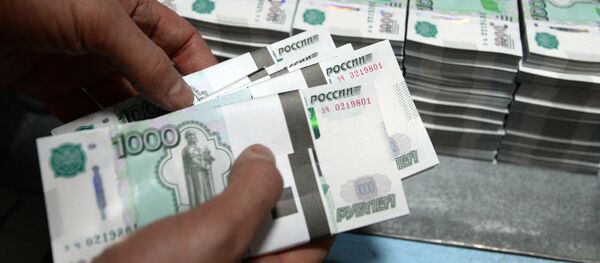While the markets have been buying the hike rumor for the past twelve months at least, fueling the imbalances in international currency markets, the wave of currency depreciations in major economies and the developing world alike has triggered massive capital flows into the US, while widespread volatility in most currency trading effectively tamed investors’ risk appetite.
The unprecedented accumulation of financial resources in North America has created massive benefits for the US currency managers, but at this point the lucrativeness of currency operations in the US is declining due to the ‘safe haven’ status and high prices on most local assets.
Consequently, money managers have started seeking opportunities abroad, which, coupled with markets ‘selling the news’ of the US Fed hike in the coming months, might reverse capital flows in favor of the higher-yielding markets, thus stirring an even greater volatility fraught with possible FX rate crashes in both advanced economies and emerging markets.
The euro has lost 20% its value against the US dollar since mid-2014, while many developing nations’ currencies have simultaneously experienced even greater devaluations, triggering feverish search for both safe havens and profitable opportunities among currency managers.
At this point, with depreciatory expectations still rife in emerging markets, US money managers are hedging 50% to 70% of their international portfolios against a further appreciation of the greenback by buying certain currencies like the euro or the Russian ruble in a series of short forward contracts. When the US Fed hikes its rates, prompting some investors to sell the greenback, money managers are hoping to increase their dollar holdings by dumping other currencies from their portfolio.
This means that global currency trading is no longer subject to market rules: a rising dollar stirs devaluations elsewhere, but a weakening dollar would render other currencies even cheaper. There is also an emerging discrepancy between the currency market profitability in the US and rest of world, most notably, the Eurozone.
While the US returns are expected to rise after the Fed’s rate hike, the Eurozone, Japan and most emerging markets are bound to sink in the persistent low profitability of financial transactions and their respective central banks will have to enact further stimulus to support the non-financial sector.
"If our base case comes to pass–the Fed hiking once in December and three more times next year, the ECB cutting in December and leaving the door open to further easing–market pricing of monetary policy will be a major catalyst in causing yields in the U.S. to diverge from much of the developed world," a recent report by Credit Suisse reads.
Many years of low interest rates in most advanced economies have significantly limited the ability of monetary authorities to address emerging challenges in the financial markets.
Meanwhile, low rates also undermined the profitability of open market operations, triggering a ‘search for yield’ on the edge of the common rules of international finance. Currencies’ FX rates had long been trapped in narrow trading ranges, but the dramatic rise of the dollar has ended that situation. Currency markets have become increasingly risky, but there is little the central banks can do due to policy implications of the low rates regime.
Another concern is that after the global financial crisis of 2008, national governments have become greatly involved in open market operations, while also maintaining their regulatory role. Many central banks have behaved in a similar manner.
Meanwhile, currency market returns have been steadily improving since 2007. The BarclayHedge Currency Index, a prominent gauge of currency funds performance, has added 3.4% in the first ten months this year.
While monetary tightening is expected in the US, and monetary easing is the likeliest projection for most of Europe and rest of world, the global currency market is poised to become increasingly dysfunctional.
Higher FX rate volatility is likely in the short-term, but the most important outcome is that the currency markets are starting to greatly affect the real economies, hitting them with such phenomena as imported inflation, across-the-border credit restrictions and the overall lower efficiency of commercial lending.



